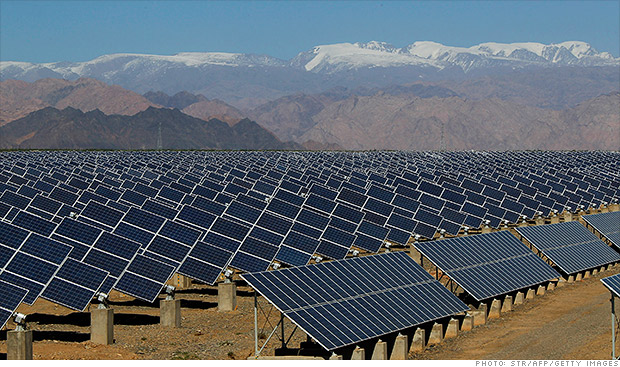As the Abbott government-commissioned RET Review draws to a close with the increasing likelihood that the review panel will come down in favour of putting the brakes on the scheme, the government in China is looking to do exactly the opposite.
Just one week after Beijing confirmed plans to phase out the use of coal and close coal-fired power plants by 2020, the head of China’s National Energy Administration (NEA) has suggested that the country might begin implementation of a Renewable Portfolio Standard (RPS).
Not unlike Australia’s Renewable Energy Target, an RPS for China could include specific quota’s for power or capacity from the country’s utilities, purchase specifications for the grid companies, and renewable use by end customers, according to Deutsche Bank.
And it’s a move that again highlights how isolated and economically isolated Australia is becoming on climate and clean energy policy.
In July, in the same week that Australia repealed its world-leading and largely successful carbon pricing scheme, that China’s National Development and Reform Commission announced the creation of a committee of experts to oversee expanding the existing seven ETS pilot programs into a unified national program.
And now, as China moves towards a scheme to boost the development of renewable energy capacity, Abbott’s RET Review – headed up by self-proclaimed climate sceptic Dick Warburton and due to table its report soon – is widely expected to recommend a reduction in the minimum amount of Australia’s electricity required to be produced from renewables.
“China is showing increasing evidence of long term sustainable plans for multi-year solar installs, and we view (NEAhead) Wu Xinxiong’s statement as solid evidence of the country’s increasing commitment to solar and wind,” Deutsche analyst Vishal Shah said in a research note.
Already, the country has a goal of 15 per cent renewable generation by 2020 (echoing the European 20/20 renewables goals). In 2012, Chinese companies invested $65 billion in renewable energy projects, a 20 per cent improvement on 2011 numbers, and they plan to spend $473 billion on clean energy investments between 2011 and 2015, according to the country’s most recent Five-Year Plan.
Shah says that implementation of an RPS in China would strongly encourage ongoing solar installations and we see benefit to vertically integrated Chinese manufacturers and installers, as well as spurring development of “even larger scale projects for the companies most well positioned in the country.”
This last point accords with what energy market analysis have predicted for Australia – that, if left to operate as legislated, the RET would deliver another $14.5 billion in investment in large-scale renewable energy infrastructure in Australia by 2020.
And it’s what Australia’s leading clean energy investors have stressed in their pleas to the federal government to leave the Target unchanged; as well as warning of the risk to billions of investment dollars – and a rise in electricity prices – if it is wound back or diluted.
Recently, the Australian head of Chinese solar giant Trina Solar, Douglas Smith, warned that his “bosses in China” were reassessing their aspirations for growth in Australia, due to the RET-focused policy uncertainty. “I can’t under-emphasise that point,” he said.









